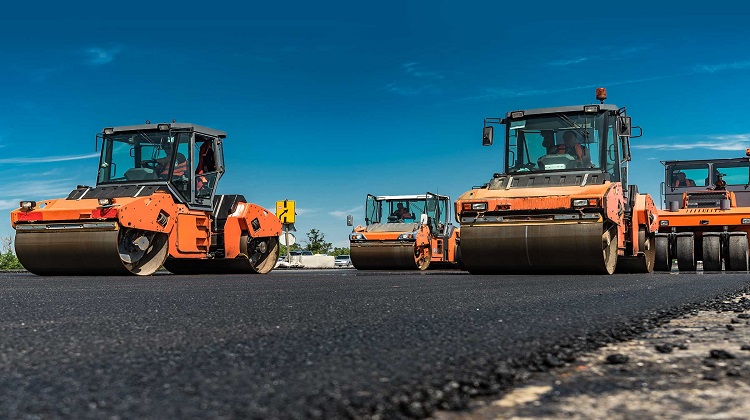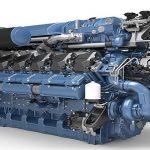Most construction sites require a level surface on which to carry out their operations. To prevent any air pockets from forming underground and interfering with the operation, the soil needs to be compacted.
To correctly compact and smooth the earth, a specific small roller compactor is required for this to operate.
The road roller is one of the most used forms of compaction machinery. The earliest road rollers were horse-drawn and used for farming, and they have a lengthy history. Because they were once propelled by a steam engine, contemporary rollers are still referred to as steam rollers.
Although the “steam” portion of the name has persisted, rollers are far more specialised in the sort of compacting they perform and are only occasionally (if ever) propelled by steam. A sheepsfoot roller and a pneumatic tyre roller function significantly differently from one another because of their differences in specialisations.
For a building job, it is crucial to understand the many types of rollers. We’ve outlined the various kinds of rollers and their functions below to assist you in selecting the best equipment.
1. Cylindrical rollers,
A cylindrical roller is one kind of walk-behind roller. These are conventional in that a person pushes them and they are pretty light. The walk-behind and ride-on versions of every other type of roller on this list are occasionally still driven by an engine.
Typically, small-scale, private operations like yard work call for the usage of cylindrical rollers. In general, cylindrical rollers are 1 metre in diameter and are composed of iron, stone, or concrete.
2. Grid Rollers
Left: “Hyster Grid type roller” by Dw1975, used with permission from Wikimedia Commons with a Creative Commons Attribution 2.0 tag.
A grid-like pattern is produced on the steel drum by a particular kind of roller called a grid roller. It has a network of steel bars. For greater contact pressure, the grid can optionally be ballasted with steel or concrete blocks. These kinds of rollers are often hauled or towed by a tractor or other large vehicle.
When doing compaction activity, the grid pattern on the cylinder drum generates a high contact pressure with minimum kneading action. They work well on well-graded, coarse soils, worn rocks, and subgrade and sub-base road structures because of this.
3. Air-powered rollers
Large ride-on rollers with many rows of rubber tyres on the front or back are known as pneumatic rollers, sometimes known as pneumatic tyred rollers. The rubber tyres offer an area of coverage of 80% and consistent pressure across their breadth.
They are frequently used for pavements and may assist polish and smoothing out a project. They are particularly excellent for layers of loose soil and cold-laid or cold-mixed bituminous pavements.
4. Sheepsfoot.
Sheepsfoot rollers often referred to as Padfoot or tamping rollers, have several rectangular lugs, or “feet,” on their surface. They function incredibly well to compress the soil and silty clay while building roads.
By ballasting the sheepsfoot drum with water, moist sand, or steel pieces, the weight may be increased, resulting in a more effective compacting process.
This kind of roller should also be used on any projects involving wet clay or other fine-grained soils at great depths. Pneumatic rollers can be used to finish up areas that sheepsfoot rollers have compressed.
5. Static or smooth-wheeled rollers
Single drum rollers and double drum rollers are the two main categories of smooth-wheeled rollers. Other names for them include static rollers. Tandem or a double drum
The tandem, also known as a double drum roller, features a front and a back steel drum. This causes the roller to move as the two drums do. Due to the tandem roller’s two drums, huge portions of a highway may be swiftly and effectively flattened and paved.
Although these rollers work well on flat or sloping surfaces like asphalt, they are not advised for anything specialised due to their poor traction.
Three-wheeled or with a single drum
Some of the most popular types of heavy equipment are rollers with three wheels or only one drum. Most people envision a three-wheeled roller when they think about road rollers. They normally feature two unique wheels in the back and a steel drum in front that can stop the majority of flat tyres.
Due to its reduced size, single drum rollers may do more specialised tasks and operate in confined locations. They work well for laying foundations and paving roads or sidewalks, although some surfaces prevent them from rolling because of the greater weight in the front.
The term “single-drum” can also apply to various rollers, like the “Padfoot” or “smooth roller,” as a point to be noted. Knowing that element can assist you to determine just what you need.
6. Rollers that vibrate
The main distinction between vibratory rollers and smooth wheel rollers (including single and double drum models) is that vibratory rollers include a specific vibrating component. It will vibrate when the roller compacts and flattens the surface.
Because of their inherent voids, dirt, asphalt, and concrete can cause a building to flex and sink, harming the structure. When working on a construction project, vibratory rollers can assist maintain the structural integrity of the structure. Crushed rock or gravel are additional soil types that vibratory rollers excel at compacting.



